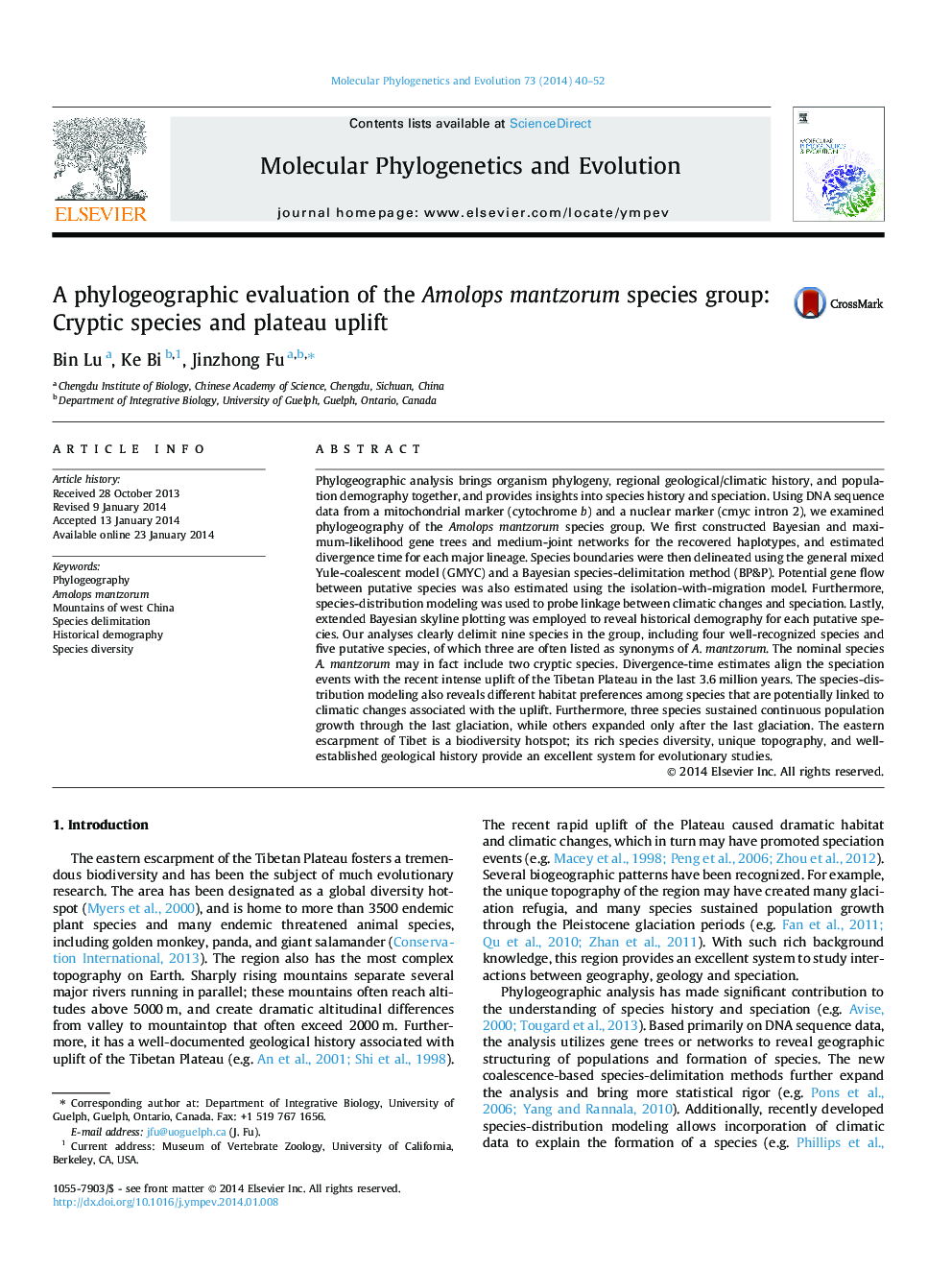| کد مقاله | کد نشریه | سال انتشار | مقاله انگلیسی | نسخه تمام متن |
|---|---|---|---|---|
| 5919513 | 1570822 | 2014 | 13 صفحه PDF | دانلود رایگان |

- The Amolops mantzorum group includes several cryptic putative species.
- Speciation processes are correlated with the recent uplift of Tibet.
- Several species sustained population growth during the last glaciation.
- Mountains of west China have complex and extremely interesting biogeography.
Phylogeographic analysis brings organism phylogeny, regional geological/climatic history, and population demography together, and provides insights into species history and speciation. Using DNA sequence data from a mitochondrial marker (cytochrome b) and a nuclear marker (cmyc intron 2), we examined phylogeography of the Amolops mantzorum species group. We first constructed Bayesian and maximum-likelihood gene trees and medium-joint networks for the recovered haplotypes, and estimated divergence time for each major lineage. Species boundaries were then delineated using the general mixed Yule-coalescent model (GMYC) and a Bayesian species-delimitation method (BP&P). Potential gene flow between putative species was also estimated using the isolation-with-migration model. Furthermore, species-distribution modeling was used to probe linkage between climatic changes and speciation. Lastly, extended Bayesian skyline plotting was employed to reveal historical demography for each putative species. Our analyses clearly delimit nine species in the group, including four well-recognized species and five putative species, of which three are often listed as synonyms of A. mantzorum. The nominal species A. mantzorum may in fact include two cryptic species. Divergence-time estimates align the speciation events with the recent intense uplift of the Tibetan Plateau in the last 3.6Â million years. The species-distribution modeling also reveals different habitat preferences among species that are potentially linked to climatic changes associated with the uplift. Furthermore, three species sustained continuous population growth through the last glaciation, while others expanded only after the last glaciation. The eastern escarpment of Tibet is a biodiversity hotspot; its rich species diversity, unique topography, and well-established geological history provide an excellent system for evolutionary studies.
Journal: Molecular Phylogenetics and Evolution - Volume 73, April 2014, Pages 40-52